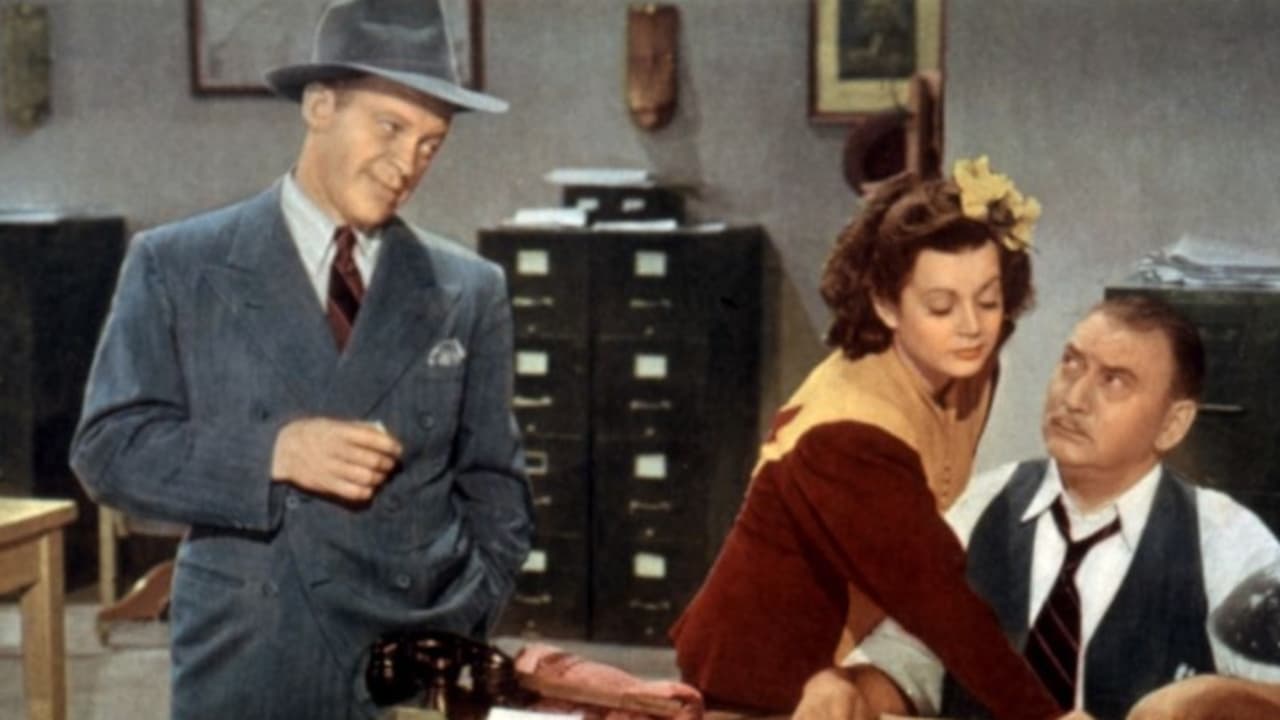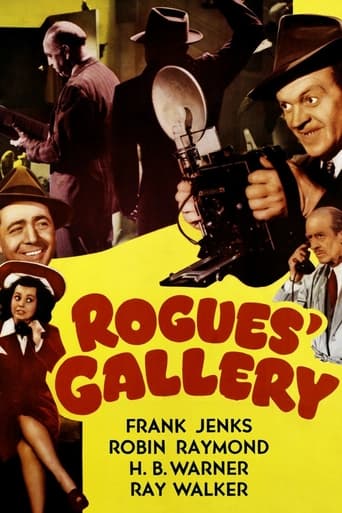

Curious knockoff, Hey, it was popular, so why not continue the trend? of the "Front Page", where a pair of pushy and nosy reporters attempt to get the big scoop on a newfangled electronic device that you eavesdrop on conversations everywhere. Everyone wants to get their hands on the invention, even if that means, yes, murder! The pair of reporters are quite smart-alecky, often finisihing their sentences by saying a cute line in unison (They like to say "Here We Go Again!" a lot). Of course the two are the ones who see everything, so they're running around all over the place during the story. It's alright I suppose, but looks cheap and somewhat unintentionally funny (the lady reporter doesn't take her huge hat off at all during the movie). Okay for what it is.
... View MoreFor the second day in a row I'm forced to use the word 'brainless' to describe a movie I've just watched. Yesterday it was the Bowery Boys in "Master Minds", but with them you expect a bit of nonsense to go with the story. "Rogues Gallery" is just a mess from the word go, as a couple of investigative reporters from the Daily Express attempt to get the scoop on a new invention and the murders that follow trying to steal those plans.What I wonder about when I watch a film like this is how any of the players could possibly make any sense out of the story. The drawings for this top secret listening device trade hands a number of times, while a couple of dead bodies wind up here and there in a dubious version of musical chairs. The invention at the center of the story was interesting though, a form of wireless communication that could pick up voices at a distance. Cell phone anyone? Now that I think about it, how secret would those plans be once they appeared in the newspaper? Those Emerson Foundation guys opened up the diagram of the device so Eddie Porter (Frank Jenks) could take a picture for the front page! The film could probably have been more tolerable if the chemistry between photographer Eddie and reporter Patsy Clark (Robin Raymond) worked a bit better. Most of the time their banter fell flat, while the whistling gag was annoying the first time around. They even used the old lights out trick, not once but twice to have the invention drawings disappear. You would think there'd be a safe in that big old lab where they could have kept them in one place for a while.Probably the thing that kept me going with this flick was the uncanny resemblance the two leads had to other actors of the era. Frank Jenks kept reminding me of Bob Hope, while Robin Raymond came across like a poor man's Martha Raye. Interesting because Hope and Raye teamed up in a dubious romantic comedy of their own five years earlier, in 1939's "Never Say Die".
... View MoreA reporter and her photographer are assigned to look into a new scientific invention that can pick up sound with out a microphone from a great distance. Of course everyone wants it so inevitably murder follows. Jokey, fast moving comedy mystery tale is an okay 1940's programmer. The plot and the comedy aren't bad, unfortunately the two leads, Robin Raymond and Frank Jenks, come off as abrasive instead of charming and I kept hoping that someone would kill them so a pair of new leads could take over. (They are the fast talking reporter clichés to the nth degree). Worth a look on a slow night but not really something you need search out. 5 out of 10, it should be a point or two higher but the leads annoyed me too much.
... View MoreThis is one of those silly 1940's mysteries with an aggressive female reporter and her half-wit cameraman, trying to get a really big "scoop." They go to the laboratory of a scientist who has invented a device for listening in on people, no matter where they are. There are a couple murders and bodies disappearing. The huffy police detective who is constantly being called to investigate things that change before he arrives. He grunts and snarls. He won't admit it, but he really likes Patsy, the reporter. There are many pratfalls, one, where the butler barely touches the cameraman and he goes flying through the living room, landing in an easy chair. It adds slapstick, which, in this case, is a distraction. The invention is taken for granted and used in the solution of the crime. It implies that there are such devices. To this day, we have nothing like this. The byplay between the two principles is pretty funny. There are some good character actors, doing slow burns, sneaking up on people, sounding very sombre. I'm a sucker for these old movies and did get a kick out of this one.
... View More